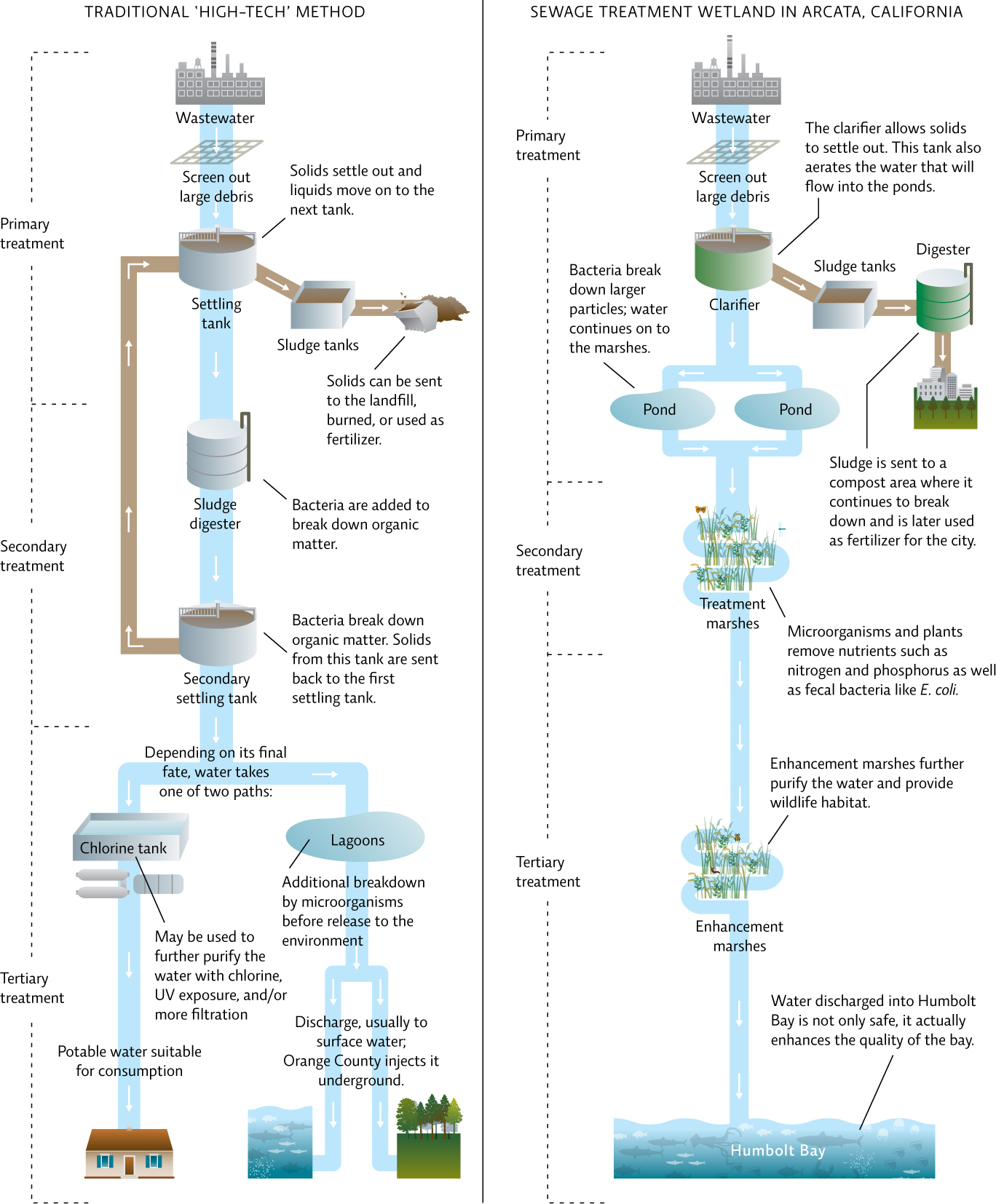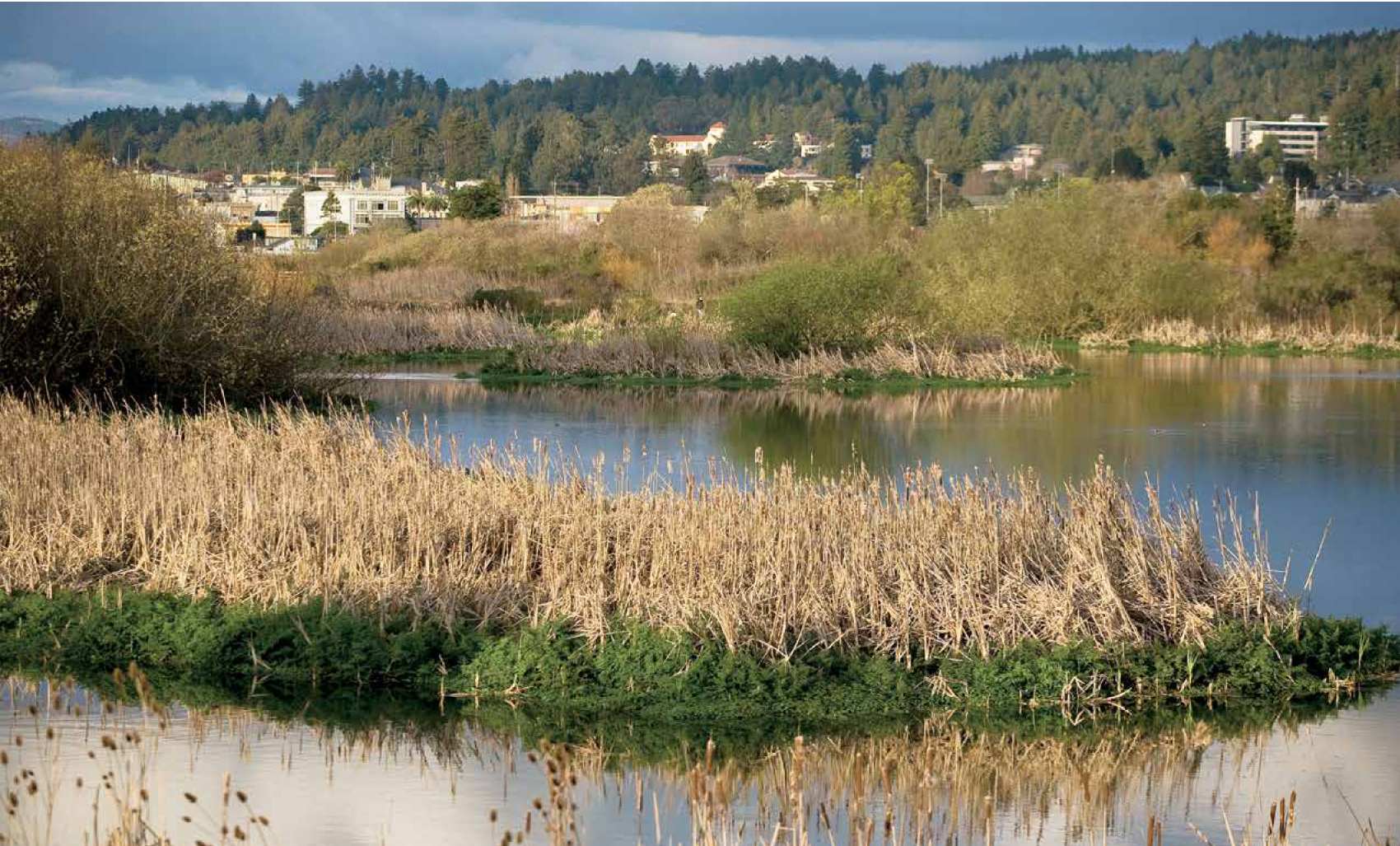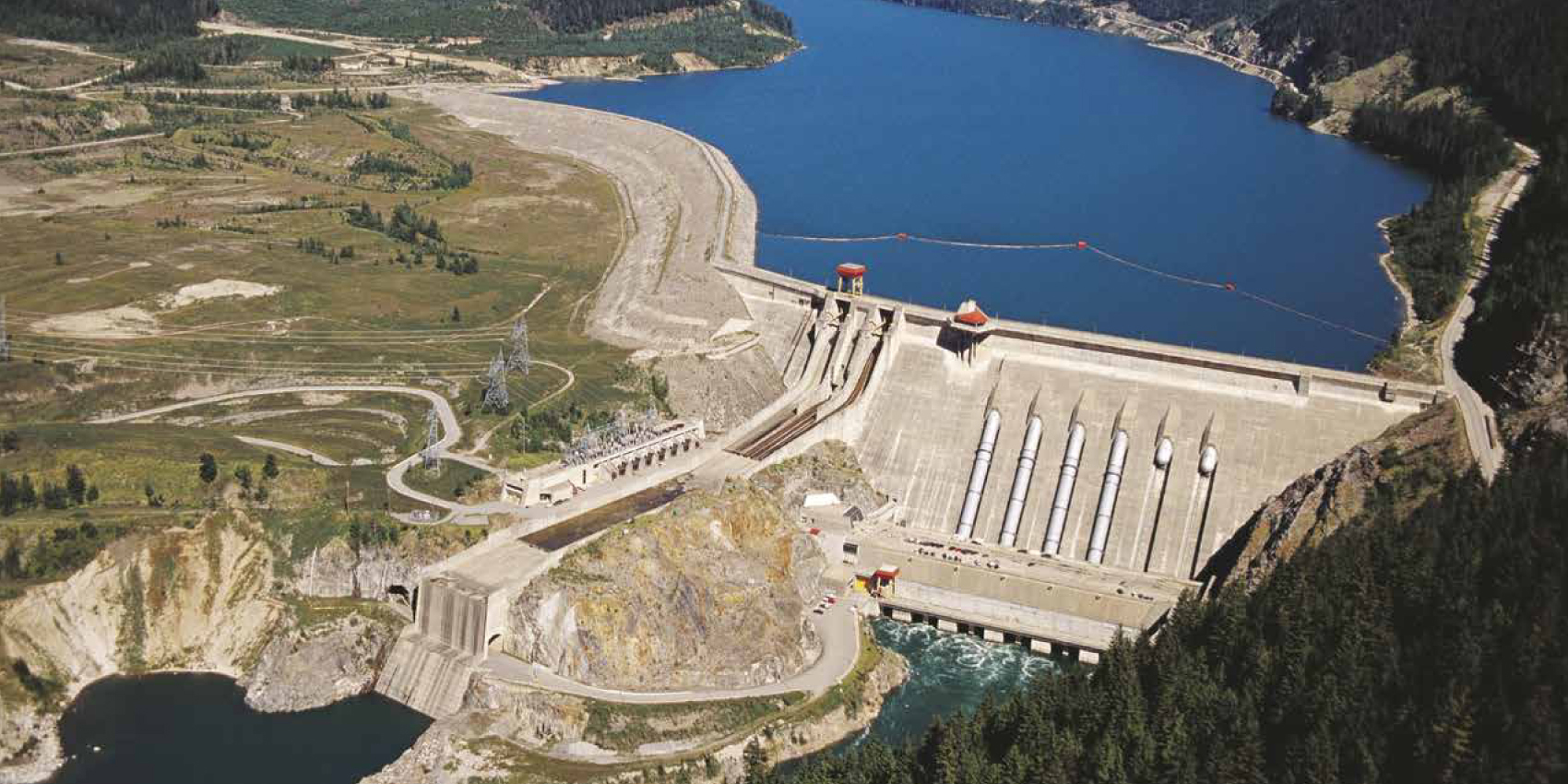15.4 There are a variety of approaches to water purification.
In the mid-1990s, Orange County water sanitation engineers and hydrologists found that they were faced with a problem of water scarcity and, at times, the opposite problem—too much water.
As an increasing number of people moved to the region, they used more water, creating excess wastewater. The OCSD already operated an 8 km “outfall,” or underground pipeline that takes treated sewage water past California’s beaches and out to the Pacific Ocean. The OCSD also had another 1.6 km-long outfall to the Santa Ana River, but it was not enough to handle heavy rainfall which could wash sewage through and out of a facility before it could be adequately treated. About 375 million litres a day of partially treated sewage water was already flooding the river. Nearly five times that amount would reach the river during a major storm. The county was considering building another pipeline to carry excess water to the Pacific Ocean.
But such an endeavour would be incredibly expensive. So the agency considered a project that would solve both the problem of too much wastewater and too little freshwater. They decided to expand the existing system that used treated wastewater to protect groundwater from infiltration by the ocean. But they knew they would face community opposition.
Since the 1970s, the county had been pumping only small amounts of treated wastewater into the ground—about 19 million litres per day, and only at the coasts. This new project would expand that amount to 265 million litres per day, and take place not just at the seawater barrier. The actual amount of treated wastewater that would make its way into people’s homes would range, but would ultimately average 15% in north and central Orange County, says Deshmukh. “All of a sudden, it became a significant component of the water supply.”
He and the other staff at the OCSD knew they would need to consult the community about the project, known officially as the Groundwater Replenishment System (GWRS)—without the support of community members, it would never get off the ground.
Once the project was conceived, they began intensive community outreach, such as presentations in front of community groups about water scarcity and the need for new sources, and placing representatives at big events. “Any chance we got we would talk about it,” says Deshmukh. Part of the multiyear initiative included outreach to community leaders, such as Skinner.
When Skinner initially learned about the project, and the fact that they had been doing a smaller version at the coast for decades, he was uneasy. “Since the late 1970s, my family had unknowingly been drinking that water,” Skinner says. “I thought of my daughter, who lives in the area. I thought about my grandson, Robbie. He would be drinking the water, and is probably right now. I wanted to be sure it was safe.”
So Skinner set about learning how the wastewater would be treated. The state health department appointed him to serve on a state committee that would review the treatment process for the recycled wastewater, and Skinner began speaking with experts about the techniques.
He learned that the first step of the cleaning process consisted of microfiltration, in which microscopic, strawlike fibres, 1/300 the diameter of a human hair, filter out many suspended solids, bacteria, and other viruses because only water can pass through the centre of the fibres.
Then, to render wastewater potable—meaning, safe for humans to drink—engineers would perform a crucial step known as reverse osmosis. During this process, they use pressure to force water through a plastic membrane. The pores of this membrane are so tight, explains Deshmukh, that salt and other contaminants (such as pharmaceutical drugs and toxic chemicals) do not pass through, but water does. After reverse osmosis, the water is exposed to ultraviolet (UV) light, which kills any remaining viruses and bacteria. Adding hydrogen peroxide helps convert traces of dioxane and some of the other toxic chemicals that might be present into harmless molecules.
Where some places only clean their wastewater with two or three treatment processes before dumping it, the Orange County water and sanitation districts made the decision to spend the money and time to do complete reverse osmosis and complete UV-light disinfection. At completion, the final product is cleaner than state and federal regulations require.
271
In addition, after the region discovered dioxane and NDMA in the water supply, officials tracked down the sources of those chemicals and rerouted the discharge into wastewater plants that weren’t going to recycle the water into the freshwater supply, says Deshmukh.
Engineers also treat wastewater not destined to be potable, says Deshmukh, such as for watering lawns or irrigation, using filtration and disinfection, without reverse osmosis.
The Orange County Water District was Deshmukh’s first job after engineering school at the University of California, Los Angeles. His thesis was on reverse osmosis, so he had total confidence in the treatment process. During presentations with community groups, he would explain that he and his parents would be affected by the project, as well. “I live here, my family lives here, this is the water we drink too.” During tours of the treatment facility, they would offer visitors a taste of the water on cups labelled “It tastes just like water!” Tasting water that was sewage only 2 hours ago, and seeing its pristine quality, “was very convincing for people,” says Deshmukh. In fact, sometimes they had to stop people from taking some home in water bottles, he adds.
Another California community, Arcata, tackled its water purification problems in a different way. Rather than constructing a typical wastewater treatment facility to handle sewage that had been contaminating nearby Humboldt Bay, they repurposed a retired landfill near the coast by converting it to a wetland—an ecosystem that is permanently or seasonally flooded. A slow river meanders through the wetland where organisms there purify it; to them, it’s not “sewage,” it’s food. The Arcata facility depends on nature to perform the job of water purification. The water discharged into the ocean is very clean and the health of the bay ecosystem has improved. But while the Arcata facility addresses the need to decontaminate sewage, it does not take the extra steps to produce potable water like Orange County’s GWRS. [infographic 15.6]


272
273

The GWRS went online in January 2008 when Orange County’s water district began tapping its artificially replenished groundwater to deliver clean freshwater to people for drinking, irrigation, and other uses. As of fall 2011, it had recycled more than 270 billion litres of water. Every day, approximately 265 million litres of recycled water are pumped into wells or percolation basins in Anaheim, where sand and gravel naturally purify the water as it trickles down into the region’s aquifers— enough to meet the needs of nearly 600 000 residents.